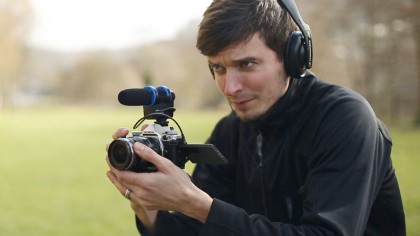Video A-Z
News
By
Rod Lawton
published
Baffled by video jargon? Our A-Z covers basic know-how right through to pro hardware

Most cameras can now shoot video, but what quality and features can you expect from each type?
- A good smartphone can shoot really good video. You don't get the manual exposure, colour and zooming controls of a serious video camera, but don't let that stop you trying. If you give a professional videographer a smartphone, they'll shoot professional-looking video because (a) video technique is a major factor in the quality of the results and (b) they'll understand the limitations of the device and work within them.
- Even a basic point-and-shoot compact camera now can shoot 1920 x 1080 full HD video, but the shape makes them quite awkward to use and the small sensors and slow processors limit the quality.
- DSLRs and compact system cameras offer bigger sensors, more processing power and interchangeable lenses, though their ergonomics are designed for stills photography rather than video.
- Professional camcorders are better adapted for video, but they are the most expensive and specialized option and not suited for stills photography – many photographers are now required to shoot both.
- Action cameras are at the opposite end of the scale. They're cheap, tough and simple to use and can clamp to almost any object to get you video footage you couldn't capture any other way.
Get daily insight, inspiration and deals in your inbox
Sign up for breaking news, reviews, opinion, top tech deals, and more.

Freelance contributor
Rod is an independent photographer and photography journalist with more than 30 years' experience. He's previously worked as Head of Testing for Future’s photography magazines, including Digital Camera, N-Photo, PhotoPlus, Professional Photography, Photography Week and Practical Photoshop, and as Reviews Editor on Digital Camera World.
LATEST ARTICLES